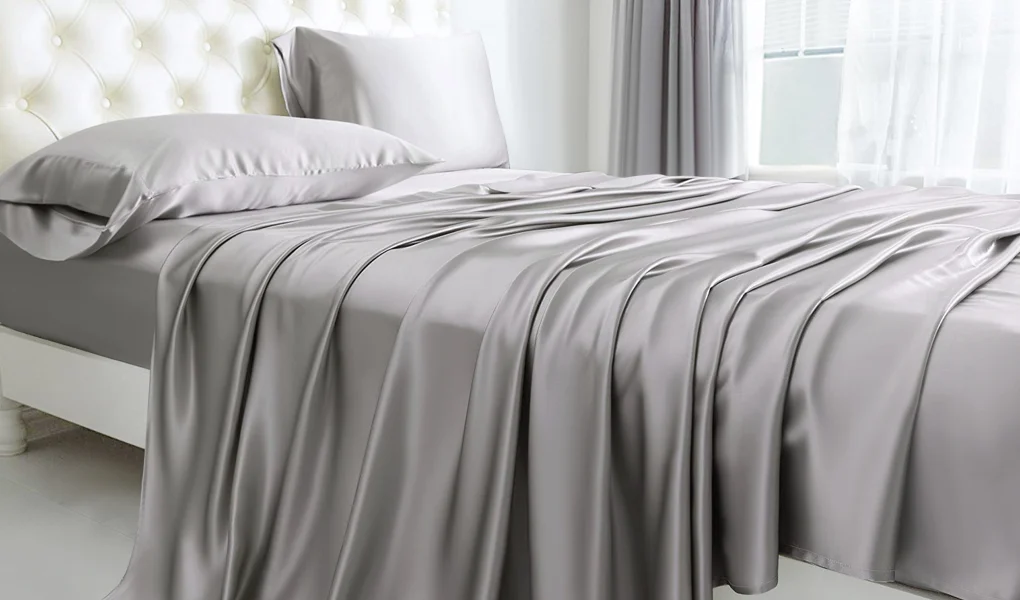If you are among the millions of allergy sufferers, you understand firsthand just how difficult it can be to sleep through the night. The best bedding is from T & A textiles bedding manufacturers specially for someone with allergies will help alleviate symptoms and ensure a better rest.
Hypoallergenic bedding
Hypoallergenic bedding is designe to minimize allergic reactions. These bedding materials are made primarily using materials that resist dust mites and mold. Hypoallergenic sheets, pillowcases, and duvet covers assist you in protecting yourselves better from allergens. Always look for natural fiber use, like organic cotton and bamboo since they have hypoallergenic properties as well as comfort for sensitive skin.
Choose Organic Cotton for Chemical-Free Comfort
Organic cotton is the best crop for allergic persons to use. Its produce is develope without the assistance of pesticides or synthetic composts, hence bringing down the potential outcomes of disturbance and respiratory issues in the skin. Breathability and delicate touch with its non-abrasiveness settle on natural cotton bedding the best decision for individuals experiencing sensitivities or asthma. It further gives excellent moisture-wicking properties that will keep your bed dry and fresh at all times.
Why Beddings are Helpful in Reducing Allergy Conditions?
Bamboo bedding
Bamboo bedding has become the favorite of allergy patients. This is on the grounds that the bamboo texture is normally hypoallergenic and impervious to tidy parasites with an excellent degree of breathability. Also, since bamboo becomes very quick, one may not utilize compound composts or pesticides on them, and the outcome is an eco-accommodating item. The body temperature regulating effects of such beddings ensure you cool down and feel comfortable with less possibilities of getting allergic reactions.
Silk bedding
Silk bedding is another excellent alternative for allergy patients. Silken fiber is an allergen-proof fiber as it is slightly resistant to dust mites, mold, and mildew. It therefore comes out to be an excellent bedding material for allergic patients. The silk texture does not irritate the skin. This is especially for those with eczema or very sensitive skin. Silk also regulates and controls your body temperature such that you are warm during winter and cool during summer.
Invest in Allergen-Proof Pillow and Mattress Covers
The best method of keeping allergens from reaching your bedding is perhaps placing allergen-proof covers over your pillows and mattress. These are made of tightly woven fabrics that can prevent dust mites, pet dander, and mold spores from penetrating your bedding, thus giving you a barrier that traps allergens and will make sure you have a good night free from symptoms.
Microfiber Bedding:
Microfiber bedding is cheap, effective, but not at the cost of comfort or resistance to allergens. Microfiber fabric tightly woven remains as a barrier to dust mites and other allergens. Cleaning is easy so keeping it clean and allergen-free is pretty easy for your bed.
Benefits of Microfiber Bedding
Microfiber bedding is:
Cheap
Strong and durable
Dries out quickly with very less chances of a mold
Regular Cleaning:
However, the sequence in which investment is made into the right bedding has to be parallel by keeping a regular cleaning schedule. It is advisable to wash your sheets, pillowcases, and covers frequently to reduce allergens. Washing in hot water at least 130°F kills dust mites and will efficiently remove pollen, pet dander, and mold spores. Drying your bedding in a hot dryer kills all remaining allergens.
Role of Memory Foam in Allergen Reduction
While comfort and support are the leading reasons why people are opting for memory foam mattresses and pillows, these sleepings offer much more to allergy patients. Memory foam is resistant to dust mites and mold as its dense structure will bar allergens from entering this material. Look for certified hypoallergenic memory foam options for maximum protection.
Down Alternative Bedding:
Conventional down bedding tends to be allergenic, while down alternative bedding can give you nearly the same feel minus the allergy issues. As it is made from synthetic materials such as polyester, comforters and pillows made from down alternative do not allow dust mites as well as mold into their folds. It could give you close to the warmth and fluffiness of down but would perform much better on those with allergies.
Why Latex Bedding Can Be Your Best Bet
Latex bedding, especially natural latex, is very good for someone who wishes to have an allergy-friendly sleep place. Natural latex is hypoallergenic, antimicrobial, and dust mite resistant. This type of bedding is tough and supports a comfortable night’s rest. Although it is available as synthetic latex, choose natural latex instead; this one might have chemical add-ons, though.
Visit stylesvibe for more informative articles.




